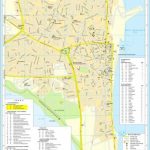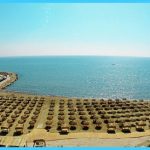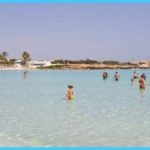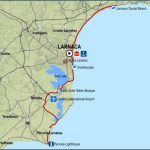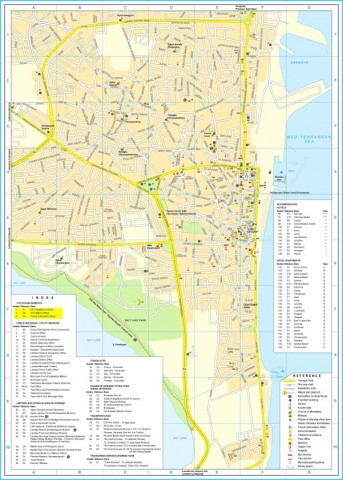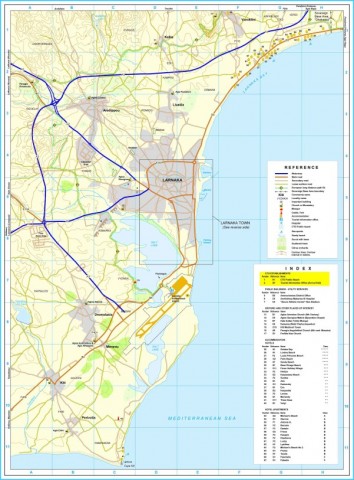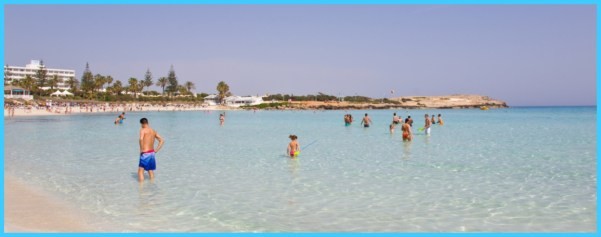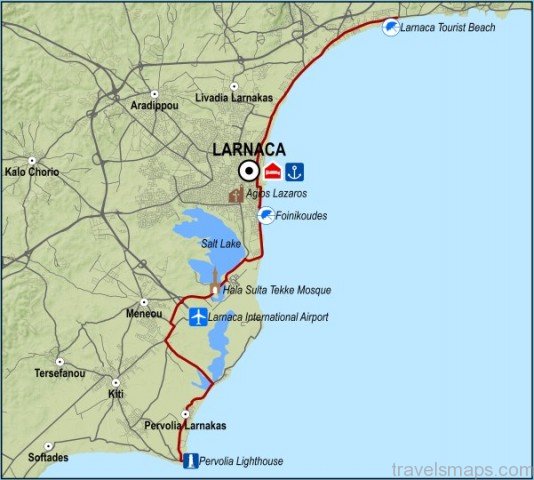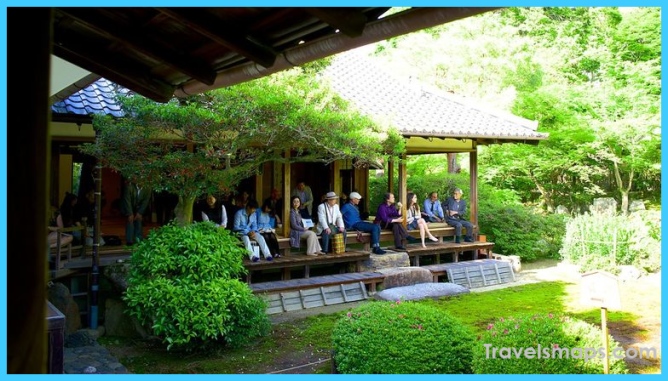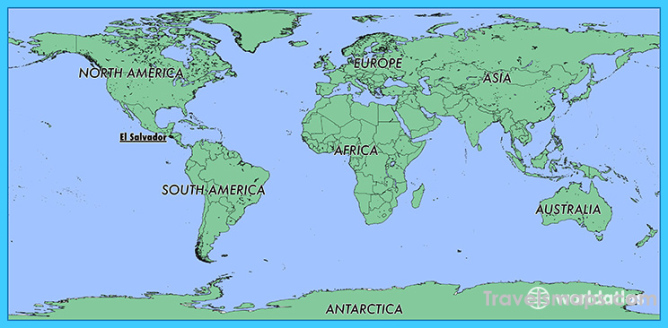EXPLORING THE WESTERN PART OF LARNAKA DISTRICT
Route: Kalo Chorio, Agia Anna, Psevdas, Pyrga, Mosfiloti
Kalo Chorio is a settlement hosting many refugees. Various historical sources refer to its existence in the Frankish period. Agia Anna is an attractive village with houses built in traditional architecture. From a few quarries within the village administation boundaries coloured slabs are extracted. Neither the old monastery of Agia Anna nor the reliquary with the “hand of Agia Anna, mother of Virgin Mary”, can be traced, as mentioned by Florio Bustron and German writer Felix Faber. Psevdas, sung by poet Xanthos Lysiotis, is rich in natural vegetation, particularly the pine. The church of Agios Ioannis Theologos (18th century), some road bridges and the traditional houses impress the visitor. Pyrga. Between Kornos and Psevdas, in a shallow valley drained by a tributary of Tremithos, lies the village of Pyrga.
Royal chapel of Agia Aikaterina
In the village, the royal chapel of Agia Aikaterina, situated in the west end of the settlement, on a hummock, is worth visiting. It was built, in Gothic style, at the beginning of the 15th century. It has a rectangular shape, three doors and a vaulted roof. It is built with igneous rocks of reddish or greenish colour, which have been collected from the adjacent area. The interior of the chapel was originally painted, like most Byzantine churches. It was later abandoned for a long time and looted by the Mamelukes, after the defeat of lanos at Choirokoitia in 1426. Only few frescoes were saved. However, there exist certain paintings, like, the Assumption, the Pentecost, the Resurrection of Lazarus, the Last Supper, the Crucifixion, etc. which can be seen. Round the fresco of the Crucifixion, a king and a queen, most probably lanos and Charlotte, are observed kneeling at the base of the Cross. No doubt the chapel of Agia Aikaterina constitutes one of the most interesting relics of the kingdom of Lusignans. Close by, a modern imposing church has been built, visible from long distances. The church of Agia Marina, south of the settlement, built in the 15th century, retains its arched roof and a narthex, added later. A worn out painting of Agia Marina is still visible, apart from an icon of 1712. From Pyrga one can visit the isolated, deserted monastery of Stazousa, creation of the 15th century, built with hewn limestone blocks in Gothic style. Pyrga is tied up with the Frankish period of Cyprus history. It is at Pyrga, in 1426, that, King lanos gathered his army, when he was informed of Mamelukes’ arrival at Limassol. From Pyrga, the next day, he proceeded to Choirokoitia where the well known battle took place. Mosfiloti. Several modern villas have been constructed, owned mainly by people from Nicosia and Larnaka. Very close to the village lies the monastery of Agia Thekla, the history of which is still obscure. According to tradition, the monastery was built in the fourth century by Agia Eleni, when the monastery of Stavrovouni was built. Its church was renovated in 1744 and in 1791, while its “agiasma” (holy well), according to tradition, cures many skin diseases including eczema.
Larnaca Beaches Map Photo Gallery
Visit to Stavrovouni Monastery and the surrounding uplands
Route: Kornos, Delikipos, Agia Varvara Annex, Stavrovouni
Larnaca Airports Map
Monastery
Kornos is known for and is proud of its pottery. The potters, with the help of the wheel and incomparable patience and dexterity, transform the inanimate clay, taken from the base of Stavrovouni, into flower pots, “pitharia”, small clay ovens, water jugs, ashtrays, incense holders, bowls, and many other items. The picnic site has all the necessary comforts for a pleasurable time away from the hubbub of the city. A covered barbecue, plentiful water, wooden tables and benches and a few basic playground features for children, comprise the furnishings of the picnic site. Delikipos is a small village which, in the early ’90s, numbered no more than 14 residents, all related with one another. It may be that the old and gnarled olive trees, as well as the Church of the Tranfiguration founded in 1726, are remnants of the Venetian period. Agia Varvara Annex. On the northwest foothills of Stavrovouni, next to the road leading to the historic monastery of Stavrovouni, one comes across the annex of Agia Varvara, of the 13th or 14th century. Up until 1983, Stavrovouni monastery was not connected to the telephone and electricity networks. Its needs, as far as water was concerned, were served by cisterns which would gather rainwater, inadequately satisfying the monks’ needs. The electrification of the monastery in 1983 enabled the pumping of water from the annex of Agia Varvara. According to a plaque over the central door of the west wall of the annex, the church of Agia Varvara was fully restored in 1820. In 1840, a Russian nun by the name of Varvara visited the annex during her stay in Cyprus. So much was she moved by the hospitality extended to her, both at the monastery as well as at the annex, that, prior to her departure, she promised to forward money from Russia towards restoring the church and the annex of Agia Varvara as a whole. She kept her promise and sent 50,000 grosha, a grail, clerical vestments and other religious artifacts. Thus, the church and the annex were significantly restored. There are about 20 monks living at the annex. They busy themselves with hagiography, gardening, bee-keeping, the manufacture of incense and candles and all the necessary duties for the smooth running of the monastery in general. In addition, many people come to the annex for confession administered by the abbot of the monastery. Stavrovouni. The road leading from Agia Varvara to the monastery is quite steep. The uphill route leads through scrub vegetation. The view from the middle of the route is breathtaking. One can clearly see Larnaka Bay and the city itself. In actual fact, one can see the entire coastal plain of Larnaka. The monastery lies at the very summit of the mountain. It was at this very point, closest to God, that the monastery of Stavrovouni was built around 327 A.D. It was here that Agia Eleni, mother to Constantine the Great, on her return from the Holy Lands, according to tradition, left a piece of the Holy Cross. Furthermore, tradition has it that the site where Agia Eleni built the church of the Holy Cross previously hosted a pagan temple. The full story of the founding of the church, according to tradition, has as follows: During her return from a pilgrimage to the Holy Lands, a storm forced her ship to drop anchor at Mari, on the Vasilopotamos river. Exhausted by the storm, she fell asleep, in the royal tent where, in her sleep, an Angel of the Lord appeared and said: “Most respected Queen, the Lord has sent me to inform you of His will. In the same way that you have built churches in Jerusalem, so shall you build in Cyprus, where you shall place a piece of the Holy Cross” Agia Eleni awoke rather frightened. She sought the pieces of the Holy Cross and discovered that they were missing. She searched for them everywhere, but in vain. Suddenly, a servant turned her attention to a distant mountain (today’s Stavrovouni), whose apex was veiled in a golden-red glow. Servants were sent to the spot, where they discovered the pieces of the Holy Cross. Agia Eleni then knelt and prayed and ordered that a church dedicated to the Holy Cross be erected at the top of the mountain.
Stavrovouni Monastery
The chapel of Agioi Konstantinos and Eleni initially served as a secret crypt where monks took shelter during raids. The monastery is renowned for the piece of the Holy Cross it contains and visitors seek to confirm its existence. Tradition has it that Agia Eleni left the right bandit’s cross, in the center of which she placed a piece of the Holy Cross. She also left a part of one of the nails which were used to crucify Christ. Today, only the piece of the Holy Cross is housed at the monastery. The church was fully rebuilt in 1426, following the battle of Choirokoitia, at which time the Egyptian general looted and razed the church. Besides, quite recently, in 1888, the monastery was completely destroyed by fire. The only artifact that remained intact was the piece of the Holy Cross. Accompanied by a monk, one can see the two plaques, one of which refers to the piece of the Holy Cross which Agia Eleni brought from Jerusalem. The wooden bell and the sundial are two other features of the monastery, even though the Stavrovouni monastery, due to its elevation and lack of springs, is known for its four cisterns. The church of Stavrovouni has been painted by Kallinikos, one of the leading painters of ecclesiastical frescoes.
Larnaca Attractions Map
Theo-doros, Choirokoitia, Tochni
The village of Klavdia hosts the church of Agios Mamas, transformed to a mosque during the Turkish conquest of Cyprus. Single-aisled, arched, entirely painted in the past, it preserves its original architectural style. Above the west door the painting of a lion, symbol of Evangelist Mark, is still visible. Traces of frescoes can also be seen on the exterior wall. Alethriko. Probably the most significant place of interest in Alethriko is the church of Agios Georgios with relics of an olive press in its courtyard. Anglisides between Kofinou and Larnaka, still produces a large number of olive trees, as in the past. Mariti, in 1760, mentions many olive-trees, symmetrically planted with very thick trunks which not even two men could embrace them. Even today two olive presses function at Anglisides. Menogeia. The Turkish Cypriots who abandoned Menogeia in 1975, left behind a very fine, tall minaret dominating the landscape. Besides, they left behind a very old church, in Byzantine architecture, dedicated to Agioi Kyrillos and Athanasios. The church, built in the 12th century, was originally painted. Today only fragments of frescoes are visible. Kofinou. In the old compact settlement the mosque with its tall minaret dominates the landscape. Machairas writes that at Kofinou are found “Agios Iraklitos, bishop, Agios Lavrentios, Agios Elpidios, Agios Christoforos, Agios Orestis and Agios Dimitrianos, who are known for their miracles”. At a close distance from the settlement lies the ruined church of Agios Irakleidios, while very near stands the domed church of Panagia, which constitutes a cultural jewel. Noteworthy is the monastery of Panagia Galaktotrofousa, founded in 1947, currently housing the followers of the old calendar. Besides, at Kofinou lies the Central Slaughter House of
Cyprus. A significant feature within the landscape of Kofinou is the Makarios Earth Station of Kakorakia, situated near the 25th milestone of Nicosia-Limassol motorway. The antennas of the station are very impressive. Agios Theodoros. A road leads from the old Skarinou Station to Agios Theodoros, through the valley of Pentaschinos with its extensive citrus trees. In the area, millions of beccoficos arrive between August and October on their journey to warmer climates.
Maybe You Like Them Too
- The Best Places To Visit In North America For Christmas
- Faro Travel Guide: Map of Faro
- Mumbai Travel Guide For Tourists: Map Of Mumbai
- Travel to Budapest
- Thailand Travel Guide for Tourists: The Ultimate Thailand Map

